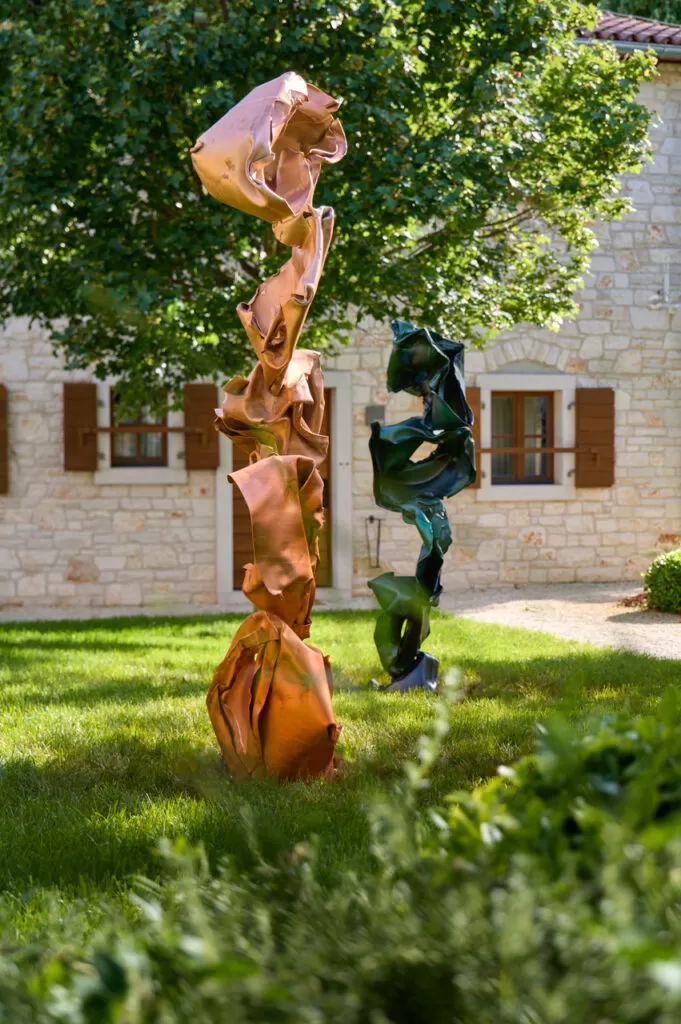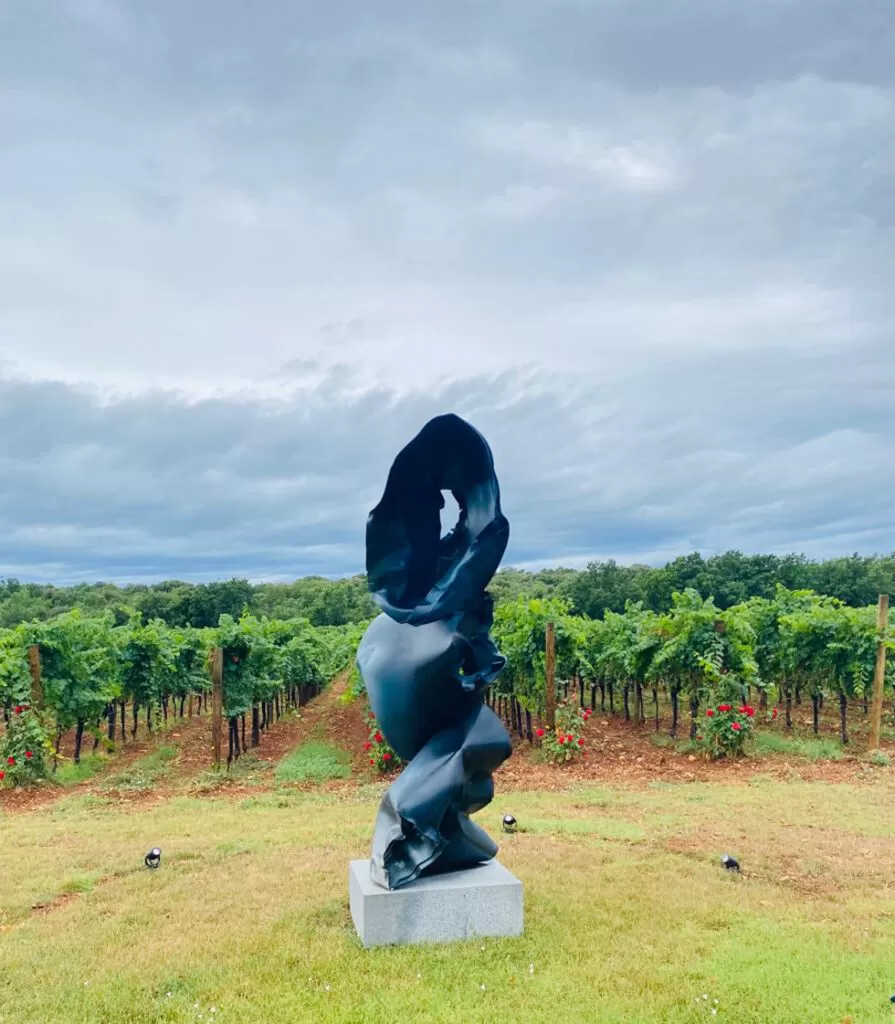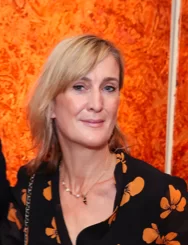Meneghetti hotel and winery is an Oasis of tranquility, off the beaten track in Southern Istria, roughly an hour’s drive from Pula. The story of Meneghetti begins over 20 years ago, when former Lawyer Miroslav Plišo and his wife Romana Kajfež discovered an abandoned farm building and small estate in the Istrian countryside.
The farm had once belonged to an Italian called Meneghetti who, after the Napoleonic Wars in the early 19th Century, when the Austro-Hungarian Monarchy took over Istria, purchased land to produce food for the 6,000 soldiers in the region, and sold all his produce to the soldiers. Meneghetti built houses and barns, planted vineyards and olive groves, raised goats and sheep and hosted Austro-Hungarian officers during their leisure time. The estate, then known as ‘Stancija Meneghetti’, established a reputation as one of the most beautiful on the Adriatic coast.

When Miroslav Plišo andRomana Kajfež discovered the neglected 19th century buildings surrounded by a wild, untouched landscape in 2000, Plišo set out to restore the estate to its former glory and spent two decades creating a discreet hotel with olive groves and a vineyard which now produces world-class wine and olive oil. Plišo has been careful throughout the process of the hotel and vineyard’s expansion to preserve the natural beauty of the landscape and to work with an architect to build in the vernacular style of architecture. At the heart of the Meneghetti ethos is a zero kilometre policy which has no carbon footprint and involves growing fruit and vegetables on the Meneghetti estate, as well as producing olive oil, and serving only locally sourced organic food in the hotel’s Michelin-recommended restaurant.
Meneghetti is now a Relais & Chateaux property, made of century-old Istrian stone, surrounded by vast natural landscapes, UNESCO world heritage sites and cultural monuments. The family-owned estate on the Adriatic coast combines nature, art, gastronomy, and hospitality whilst emulating the Istrian lifestyle, architecture and local spirit. The central hotel with its surrounding private villas has 58 rooms in total and offers views of the historic Islands of Brioni, and guests can cycle on the hotel’s bicycles to the nearby Beach club.
Food and wine are two important ingredients of Meneghetti’s special formula, and architects Željko Burić and Antonio Balazzero recently built a new winery and tasting room on the Meneghetti estate. Head Chef Damir Pejcinovic prepares the most exquisite food in the Meneghetti’s Michelin-recommended restaurant, and the knowledgeable Sommelier Domagos Binder advises on wine. Meneghetti has been recognised by “Wine Spectator” with an award for excellence”, the equivalent of a Michelin Star in the wine world.
The Meneghetti winery offers a wine tasting experience, which involves sampling the Meneghetti white, red and rose wines that have put Croatian wine on the map. Meneghetti’s Moni Emvasiswine is made using the Malvazija grape, which is indigenous to Croatia and has a long history. In Ancient Greek, Moni emavsismeans ‘single entrance’, which gave the name to the medieval port of Monemvasia, a trading point for fine reduced in the Peloponnese. The Venetians called the wine Malvasia and made it famous all over the Mediterrranean, creating the first global wine brand.

The 3rd element of the triumvirate that contributes to the success of Meneghetti, making it a completely unique cultural destination, is art. After perfecting the arts of oenoligy and gastronomy at Meneghetti, CEO Plišo turned his attention to fine art, setting up a cultural program and exhibiting established contemporary Croatian artists including Dušan Džamonja and Božica Dea Matasić, and supporting emerging artists by donating a share of exhibition sales to associations promoting the artistic production of the new generation of artists in the region. Plišo expanded the cultural programming by opening asculpture garden of Arne Quinze sculptures on the estate in June 2023, which spans 120,000 square metres of carefully conserved Adriatic landscape and vineyards.
The Meneghetti has established a reputation internationally for achieving a harmonious balance of location, design and hospitality, whilst conserving and reviving the natural surroundings and local culture and produce. When planning the inaugural Meneghetti sculpture garden, Miro sought the advise of Berlin-based curator and international art consultant Reiner Opoku, who suggested internationally acclaimed Belgian artist Arne Quinze for the commission – the choice, it turns out, was an inspired one, for his large-scale sculptures inspired by Lupine flowers perfectly complement the beauty of Meneghetti’s bucolic landscape. The organic quality of Quinze’s sculptures enables a fusion of contemporary art with the beauty nature.
Arne Quinze ‘Lupines’ is inspired by Southern Istria’s typical flower, which symbolizes imagination and the cycle of life. The sculpture garden is on view until October 2024 and marks the first in a series of exhibitions and cultural programming at the property to present international contemporary art in the region.

Arne Quinze: ‘My art is my representation of how I perceive nature. I try to convey the harmony, transience and duality of nature through my work. With my art, I want to immerse the viewer in the unbridled beauty and diversity of nature.’
Arne Quinze is known for his interpretation of nature and all of its mesmerizing cycles, and the six Chroma Lupine sculptures installed at Meneghetti take inspiration from nature, whilst transporting visitors on a tranquil journey through the bucolic gardens and vineyards of the Meneghetti estate. For example,Chroma Lupine Chameleon’s(2019) is installed in the olive garden, its constantly changing metallic blue echoing the diversity of nature.
Quinze is a Belgian contemporary artist, painter and sculptor, whose work ranges from small drawings and paintings, to medium-sized sculptures and vast public installations. Born in Belgium in 1971, Quinze currently lives and works in Sint-Martens-Latem, near the Belgian city of Ghent. He started on out as a graffiti artist in the 1980s in a quest to make cities open air museums, and his oeuvre evolved from Street Art to Public Art with recurring themes including social interaction, urbanisation and diversity.

©Sky Sharrock
The Meneghetti sculpture park showcases Quinze’s ability to create fluid scuptures from aluminum, that capture the beauty of nature and are installed in harmony with the surroundings. Quinze has nurtured a wildflower field in the garden of his atelier in Belgium for more than 10 years, and his art is inspired by nature, his botanical knowledge and affinity with the natural world, making him the perfect choice to create sculptures for the inaugural Meneghetti sculpture garden. Quinze’s quest to preserve nature and emulate its beauty through his artistic practice, is perfectly attuned with Meneghetti CEO Miroslav Plišo’s mission to preserve the natural beauty of the Adriatic landscape at the Meneghetti estate.
Arne Quinze explains: “As an artist born in 1971, the devastating reality that one-third of the world’s flora and fauna has been lost during my lifetime is a profound shock. It is my duty to harness the power of art to advocate for a harmonious balance between culture and nature.”
Meneghetti CEO Miroslav Plišo adds: “Meneghetti is already worldwide known for its subtle luxury embedded in the nature surrounding it. I couldn’t think of a better way to compliment the estate even more than by bringing Mr. Quinze’s sculptures and placing them throughout the estate.”
Arne Quinze ‘Lupines’ is at the Meneghetti Wine Hotel & Winery in Istria, Croatia, until October 2024
©2023 Dave Bruel, Sky Sharrock, Arne Quinze





